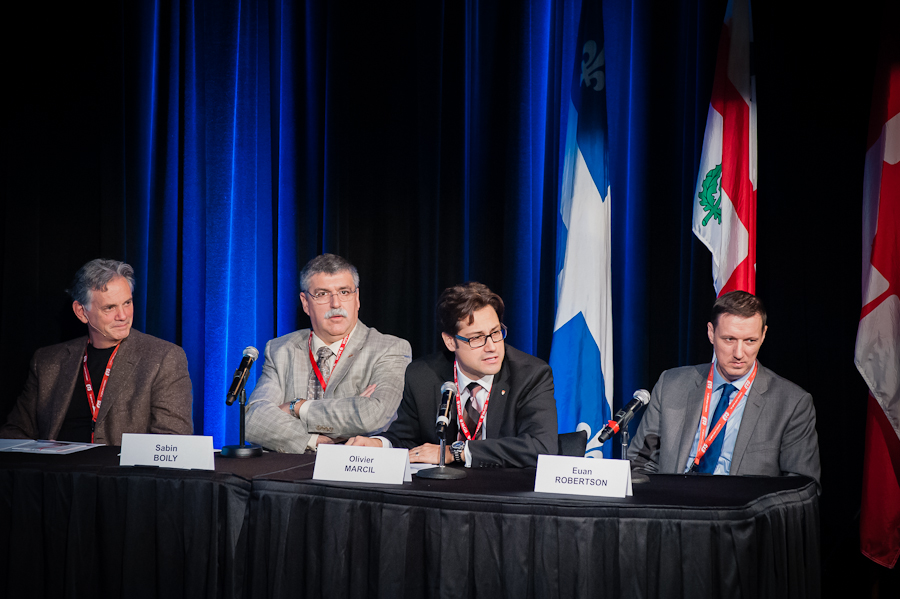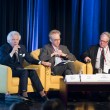On Oct. 30, the second Montreal Summit on Innovation, provided an opportunity for McGill and the École de Technologie Supérieure (ÉTS) to present the Quartier de l’Innovation (QI) project to experts on innovative districts.
The QI is a joint venture between McGill and ÉTS, an engineering school in Montreal that plans to spearhead development in Montreal’s Griffintown district. According to Vice-Principal (External Relations) Olivier Marcil, the project aims to merge “social and technological innovation with entrepreneurship” in an environment that promotes interaction and innovation between McGill and ÉTS researchers, private businesses, and artists.
Vice-Principal (Research and International Relations) Rose Goldstein first announced the QI initiative to the McGill community during the February session of Senate, the highest academic body at the university. According to Marcil, McGill and ÉTS hope to launch the project in early 2013.
“A massive restructuring is already under way, with $2.5 billion already invested and commitment of up to $6 billion over the next 10 years,” Marcil said. “Our aim for the QI is to build on this momentum, together with the stakeholders, to create a district that celebrates social innovation, as well as diversity in the arts, culture, and ideas.”
Marcil noted that the QI is a long-term project. It will be fully operational in about 10 years.
To date, the project has received support from all three levels of government, which together contributed up to $1 million to research the feasibility of the project. McGill and ÉTS also received an additional federal grant of $25 million that will go towards research on second generation biofuels—fuels that do not compete with agricultural commodities such as corn.
“Our goal is to develop the knowledge, tools, and programs so that in the next 10 to 20 years, 25 per cent of fuels in the country are composed of biofuels,” he said.
The City of Montreal is playing a major role in the development of infrastructure in Griffintown. On Oct. 18, the City of Montreal launched a special urban planning program (PPU) for the district, including a pledge to spend $93 million in infrastructure over the next four years. The urban plan also includes the creation of six new public green spaces and a “Cultural Corridor” on Ottawa Street.
Though the announcement comes months after the QI idea was proposed, François Goneau, director of communications for the City of Montreal, told the Tribune that the City’s plan to invest in the area was not directly related to the QI project.
“Planned investments in the sector are above all related to obligations of the City to establish in Griffintown the conditions that will make the environment one of high quality,” Goneau said in French. “It must be remembered that the urban plan adopted in 2004 identified the area of Griffintown as a detailed planning area—the mixed use of urban spaces and the importance of residential use as an engine of revitalization were clearly announced.”
Consultation and criticisms
As Griffintown is a low-income neighbourhood, one of the major concerns surrounding the project is that the real estate development will lead to gentrification in the district of the South-West borough.
Marcil explained that McGill and ÉTS created a liaison group that aims to mitigate the effects of real estate development in the area. The 20-person group is composed of citizen representatives, real estate developers, and members of McGill, ÉTS, the City of Montreal, and the borough.
“In addition to consultation with community members, the QI plan currently aims to have at least 15 to 20 per cent of low-income apartments to avoid gentrification,” Yves Beauchamp, CEO of ÉTS, said.
“Already in that area, there is a population of artists, and we don’t want them to leave the area,” he continued. “We want to create a place where a creative community will [be] established and, with the presence of university [and] enterprise, we will come up and [interact with] the creative community in a way that will be [conducive] to the development of innovation.”
 Andy Pratt, a professor at King’s College London who attended the summit, criticized the summit’s emphasis on investment in infrastructure, and advised that the organizers focus on the creative aspect of the innovative district.
Andy Pratt, a professor at King’s College London who attended the summit, criticized the summit’s emphasis on investment in infrastructure, and advised that the organizers focus on the creative aspect of the innovative district.
“It’s not the real estate that makes this work… the real estate is a part, but not the most important part,” Pratt said. “It’s very important to go beyond simply the physical design of these places and to think much more carefully about how to construct an ecology of creative and innovative firms.”

















